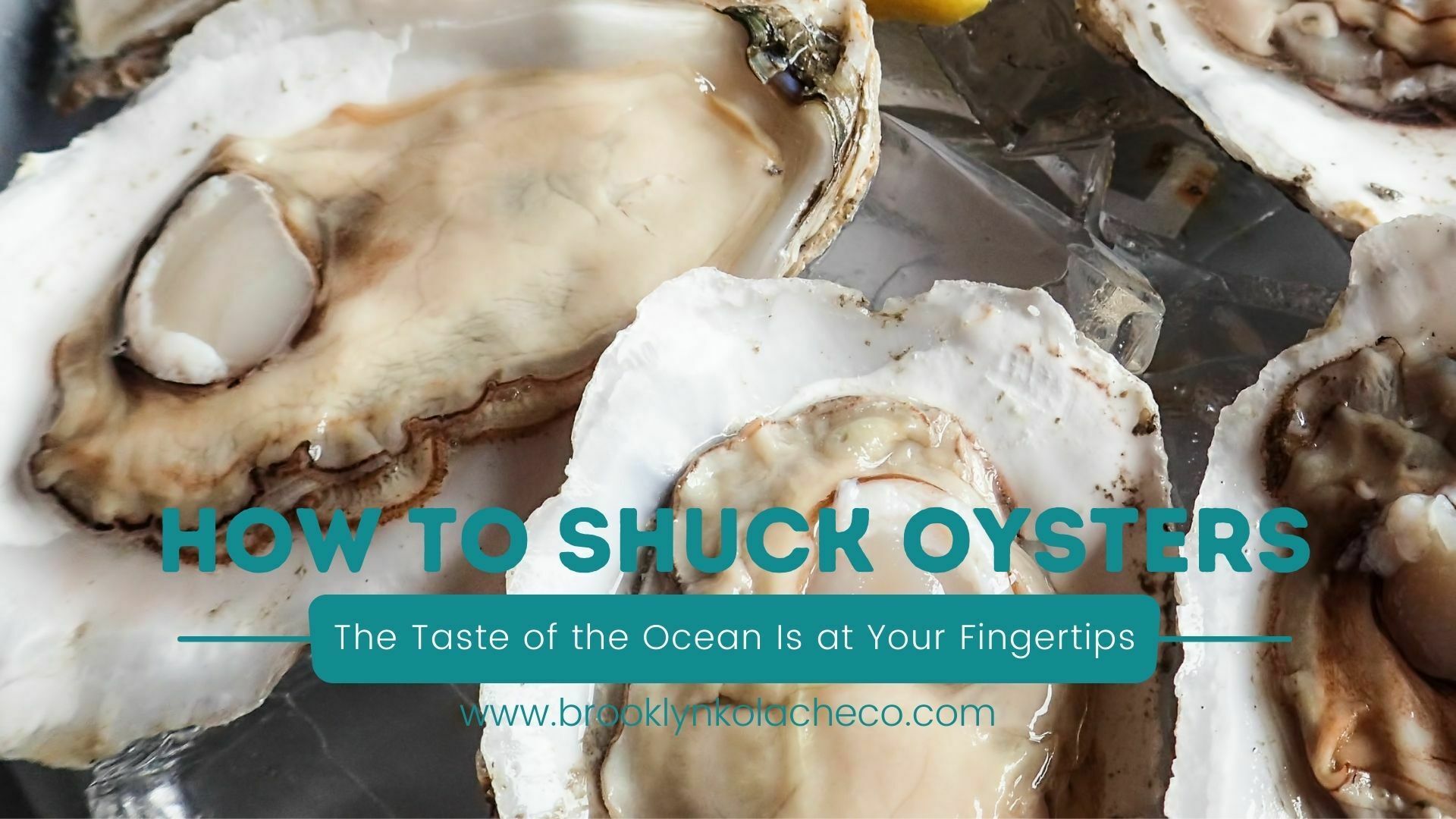Oysters are one of the favorite kinds of seafood because they have a cold and salty appearance with the ocean’s fresh flavor and salty-air taste. Western people often use live oysters with crisp white wine, Champagne, or cold beer as an appetizer. However, to enjoy this delicious dish, you have to know about buying and how to shuck oysters.
Nice oysters are not only a delicious dish but also among the healthiest food for you and the environment. Fish farms usually emit harmful waste tons and require a large amount of food and expensive medicines; meanwhile, oyster farms do not almost impact the environment. This sea creature can clean the water where it lives.
How to Buy and Store Oysters
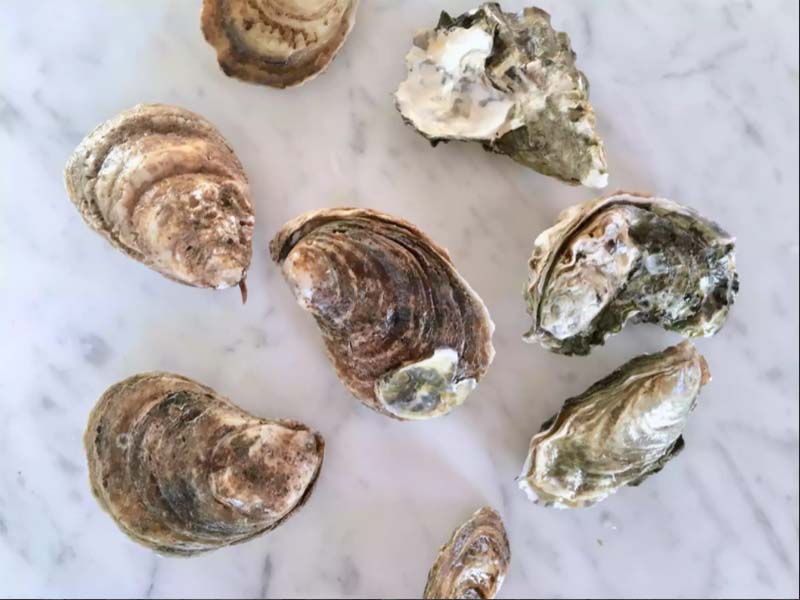
You must buy the shelled raw oysters; if not, the purchase is illegal. Oysters have to be clamped tightly and shut. If they open the shell and do not close immediately when you touch them, this means those oysters are dead. Hence, you should avoid buying them.
Next, smell the oysters carefully. Don’t pick any oyster with a fishy aroma. Fresh oysters always have the sea breeze flavor. Besides, you need to ensure oysters are kept in the side-down cup in stores and chilled on crushed ice. Their shells are not broken or cracked.
After shopping and taking them home, you have to store oysters in a container. You have to lower the meniscus of the oyster again to keep liquid as much as possible.
Then, using a damp cloth to cover the container closely, put it in the refrigerator within a week. Never use food wrap to seal the oyster box; if not, the oysters will suffocate and pass away.
Before shucking, you need to scrub oysters under cold water. Thus, you will remove dirt, sand, mud, and nasties under their solid outer shell.
In addition, you have to check the flesh. If it is nice, plump, and glossy, you can eat those oysters. Otherwise, let’s remove low-quality oysters (fishy smell, cracked shells, a bit of opening).
Additionally, the simplest serving way will keep the full flavor of oysters. Let’s take a few drops of mignonette, a squeeze of lemon, and the unique recipe for the cocktail sauce to eat with oysters.
You can refer to our recipes to enjoy the best oysters.
- Cocktail sauce
Two tablespoons of ketchup and grated horseradish (prepared or fresh).
Lemon juice.
Tabasco.
Worcestershire sauce.
A large amount of ground black pepper.
Mix all materials well and sit this sauce overnight; thus, it can get the best flavor.
- Mignonette
Perfectly minced shallot: a couple of tablespoons.
White wine vinegar: 2 tablespoons
A large amount of ground black pepper.
Blend all materials well and enjoy this sauce with oysters.
How to Shuck Oysters: Ultimate Guideline
To shuck oysters, you have to practice a bit. Although you may not be faster than an expert raw-bar shucker, you will rapidly open from 10 to 20 oysters to serve your family meal.
Now, let’s follow our step-by-step guidelines to shuck oysters effectively.
Step 1: Arrange The Workspace and Orient The Oyster Batch
Let’s take a big bowl and fill it up with ice cubes and cold water. Then put oysters in this bowl. Make sure oysters are submerged in water to chill them during shucking.
Take a kitchen towel and fold it along the length into one-third. This towel helps you brace the oyster to prevent your hand from the knife’s accidental slip while shucking it.
You should fill a medium bowl with crushed ice and a bit of salt, then put a smaller one into it if you want to remove the oysters from the shells entirely. Ice and salt coating will preserve their coldness and liquid.
If your oysters are in the half-shells, you should take a baking tray with the salt and crushed ice rim to stabilize them.
Besides, preparing garbage or plastic bags to collect shells and others.
When taking the first oyster, you have to determine its belly. The belly side is at the bottom, and the other side is flat and at the top. It is a bit difficult to identify for some oyster species; however, it is relatively easy to do this.
Step 2: Put The Oysters in The Kitchen Towel
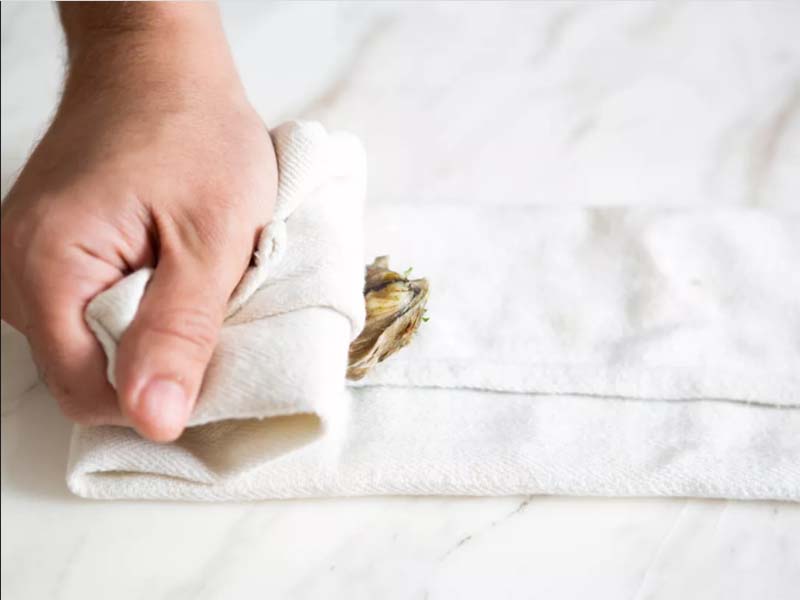
In this step, you have to nestle your oyster in the towel. First, put the oysters’ hinge along with your dominant hand. Folding the towel to let the hinge be exposed. Put your other hand to hold the oyster steadily. Thus, if the knife slips, the towel will prevent it from cutting your hand.
Step 3: Place the Knife Tip in the Hinge
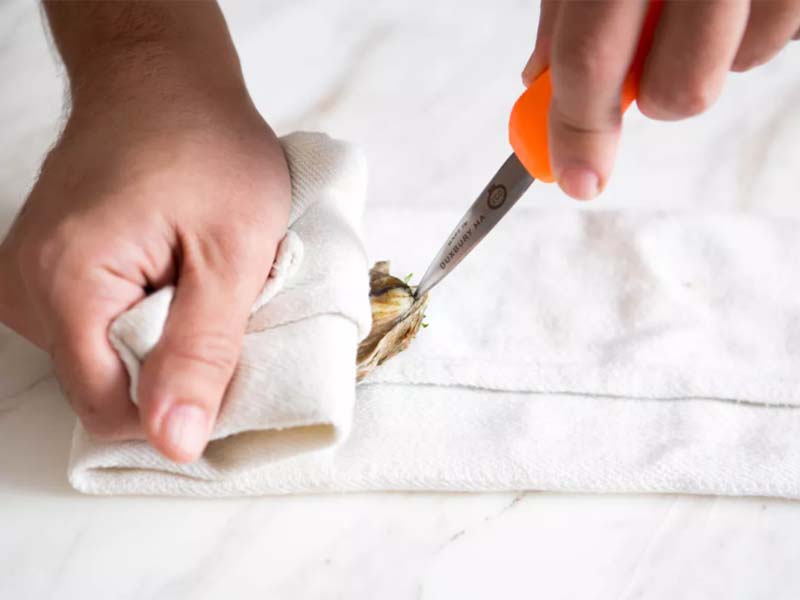
Put your knife into the oyster’s hinge to make a handhold. Thus, your knife will have a few leverages if you do not like pushing it too hard.
You have to wiggle the knife around the oyster until you create pressure against the top and bottom shell simultaneously, thanks to twisting and pry movements.
Step 4: Twisting and Prying the Knife
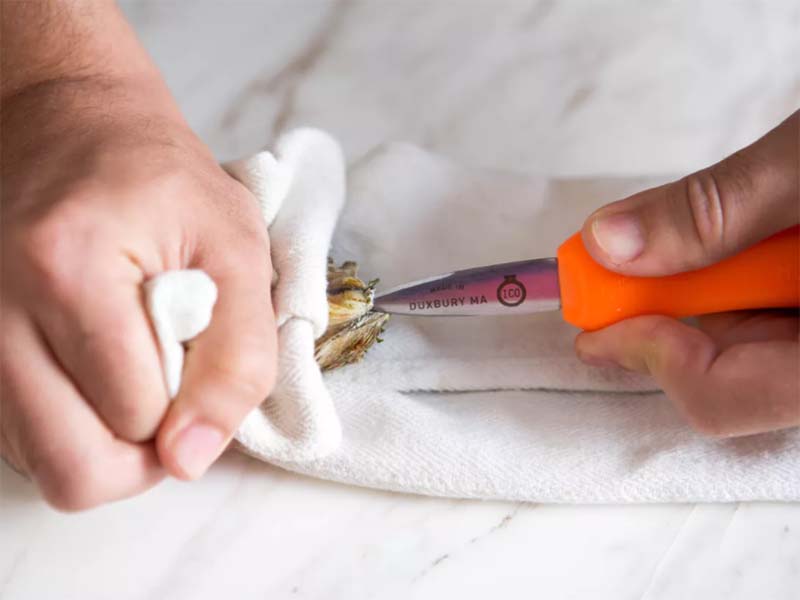
Once you place the knife solidly, let’s move the blade up and down, twisting and rotating it simultaneously. You should identify the suitable position and movement to pop the top shell out.
Let’s remember that it would be best to use enough force to impact the hinge. Hence, you can keep the knife firmly and not have to push harder.
When you feel you determine the knife’s spot wrong, let’s repeat to get an ideal position. Then, pop the top shell to take the oyster out. The more you practice, the more proficient you will be at peeling oysters.
Step 5: Continue to Separate the Oyster Shell
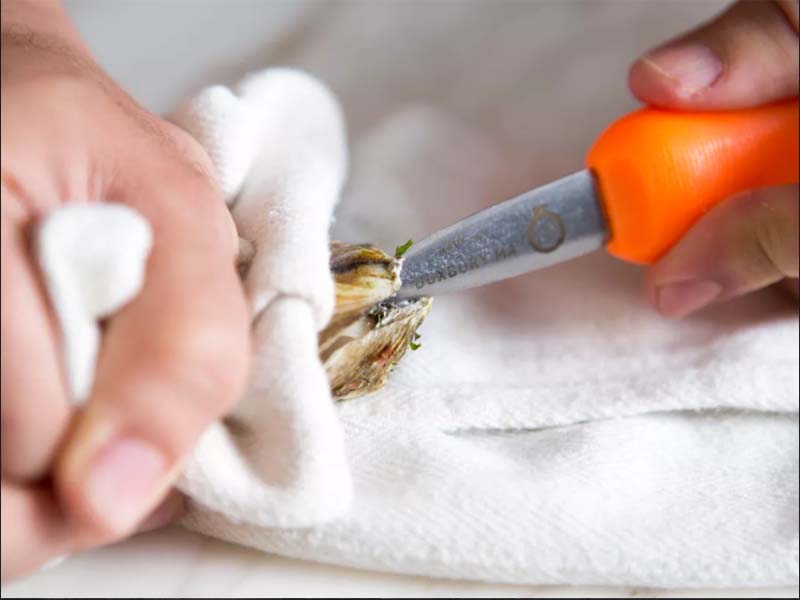
You are rotating the knife blade to separate the top from the bottom shell more. When the shell pops, there will be a very narrow slit. The oyster can’t close, but the slit still does not open more widely. Therefore, twisting your knife to detach two shells even more.
Step 6: Clean The Knife Blade
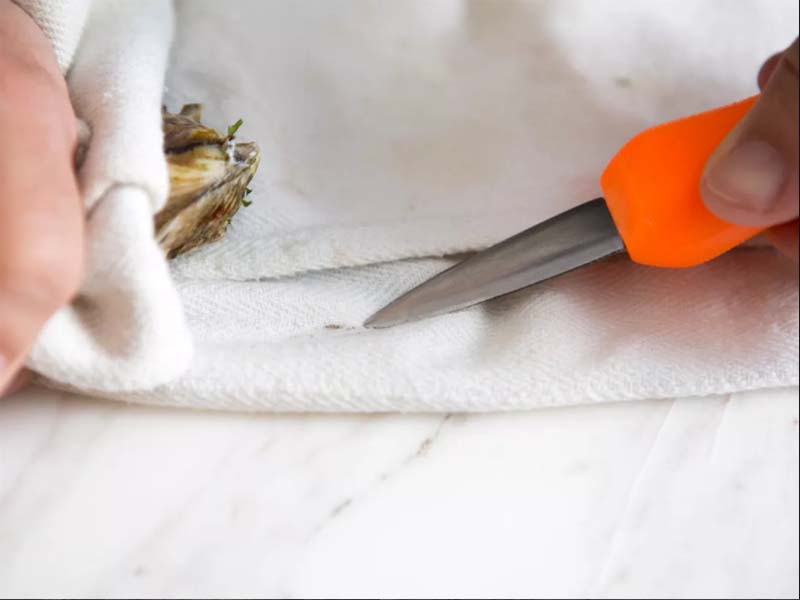
Even though you clean oysters before shucking; however, some mud can stick in the hinge. Hence, I believe you do not want to spread the mud into the next oysters, so let’s clean the blade.
After wiping the knife, let’s continue to shuck the oyster.
Step 7: Cut The Muscle

There is a connected muscle inside the oysters. They use this muscle to open and close their shells. When you pry the shells, the oysters get enough damage not to shut tightly again. However, this muscle still works as a tie between the top and bottom, so you have to cut it entirely.
You almost can’t see it because the shells are still closed together. Thus, let’s cut the connected muscle by your feel. Slide your knife from the hinge end to the oyster across the oyster. Hold the blade as flat as possible against the top.
When you go approximately two-thirds way, you will come to the muscle place-sweeping the blade across until you hit it and cut it completely.
After solving that muscle, you will be able to pull the top off. Detach the meat that clings to the top with the knife. Be careful not to ruin the oyster.
Step 8: Eliminate The Top Shell and Inspect the Oyster Meat
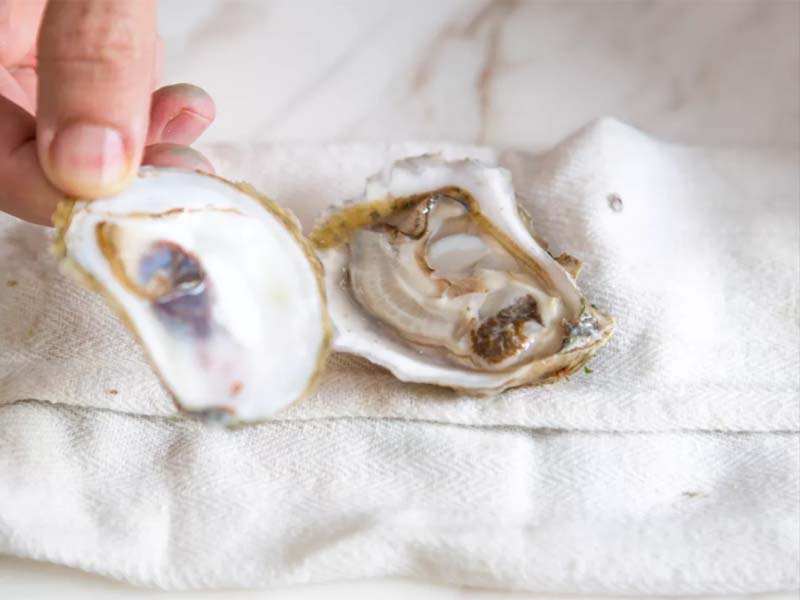
Removing the top shell to finish. Let’s check the meat. You have to ensure the flesh is fresh and clear. You should eliminate the oysters even if they have a bit of odor.
Alternatively, the shell fragments may leave on the fleshy oyster, so you have to take them out by knife, especially the hinge. Sometimes, you can find a teensy-tiny soft-shell crab (an oyster crab) that is hidden in an oyster. Don’t worry, let’s throw this sea creature and enjoy the oysters.
When shucking the oysters, don’t lose their heads and liquor. If not, you can’t reach the perfect flavor with this seafood.
Step 9: Release The Oyster from The Bottom Shell

Slide the blade under the oyster, cut the bottom shell’s muscle to eat more efficiently. Push the oyster to let it go out of the shell.
Put the oyster on the plate or tray if you want to eat them on the half shell. In case you prepare an ice bowl, slide it into that bowl and throw out the shell. Then take the next oyster and repeat the above steps.

You may refer to the below video to learn about shucking oysters.
Frequently Asked Questions
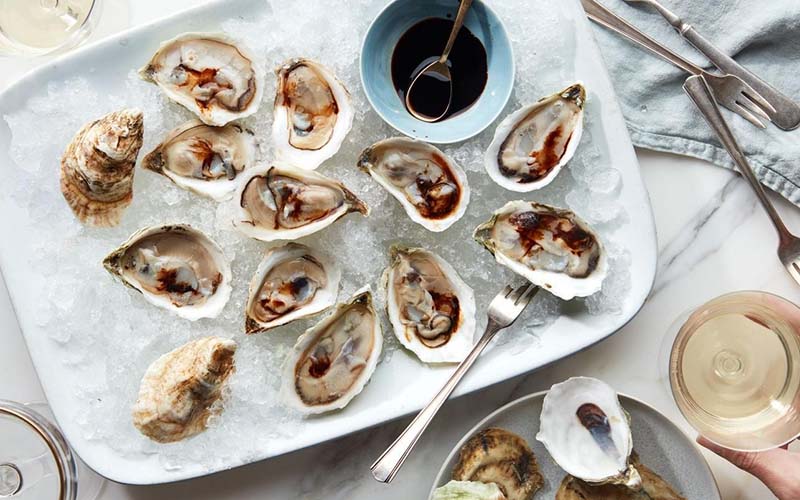
What Is the Difference Between East Coast And West Coast Oysters?
There are many debates about whether East Coast or West Coast oysters are better. If you are wondering this question, we will give you some tips to identify East Coast and West Coast oysters.
East Coast oysters
Basically, East Coast oysters are often very salty and briny. Besides, they have a clean and crisp seawater scent.
You may consider some following suggestions.
- The oysters come from Massachusetts and Wellfleet, which own the outstanding blue-green bivalves.
- Pemaquid and Maine oysters are bit large and reddish. They are ultra-salty and may not suit some people.
- Blue Points oysters are from Long Island, which is also an ideal choice. When buying this oyster type, you should be careful because the name Blue Points are normally abused.
- Island Creek oysters are sold widely from a farm in Duxbury, Massachusetts.
- Belon oysters have a more apparent taste and less color than above Atlantic oysters.
West Coast oysters
West Coast oysters include some species (Kumamoto, Olympia, Pacific, etc.) They have a creamier and softer texture. Their taste ranges from light metallic, mineral-like to almost fishy with a hint of iodine.
If you just start eating oysters, Kumamoto oysters are mostly feed-in Washington State, which is the best choice. They are small, pretty mild, and plump with a light melon taste.
One of the most popular Pacific oysters is the Fanny Bay species from British Columbia. They own a unique cucumber shell.
Besides, the Olympia oysters were dominant in Washington. However, the Pacific varieties from Japan replaced them. Olympias has the most robust and mineral flavors.
Whatever oysters you buy, you should make sure they are healthy and fresh before eating. The inside fluid has to be quite clear, not yellow or cloudy. The flesh looks vivid and shiny (no yellow or dull).
Alternatively, there is no fishy aroma, rotten, or stink. Don’t try to eat damaged seafood. Throw away any pieces if they are double-in them because this can cause illness.
How to Shuck Oysters Fast?
Have you ever wondered, is there a way to solve the pile of oysters in a short time? If you have to shuck a large number of oysters quickly, you will be able to use a special tool. This oyster opener helps you reduce stress while shucking oysters.
Thus, you just need to take one stroke with the leverage to open oysters, especially seafood restaurants and caterers, the kitchen department has to invest in the oyster opener. Hence, the cookhouse does not require a lot of workers. Also, the kitchen prep will be more reasonable and efficient.
You have to practice shucking oysters frequently if you want to be an expert, even you use a dedicated opener tool. Therefore, you will shorten the time to serve when you work in a busy restaurant.
Do I Definitely Need to Rinse Oysters Before Shucking Them?
Our answer is yes. No matter how shy you are, you still have to wash your oysters before you peel them. Let’s view the oyster’s underwater environment; it contains much dust, debris, sand, and mud that can stick on the oysters.
Take an ice water pot and put oysters into it for 10 minutes. This period is long enough to free up the dirt from the surface. Next, discard the water, continue to pour fresh water into the pot. Use a scrubber brush to remove the remaining dirt and debris and rinse oysters in the water pot once again.
Do I Have Any Tip and Trick When Shucking Oysters?
We have some advice that helps you solve your oyster batch effectively.
Hold the oyster tight while shucking it. Thus, you can protect your hand against slipping and injury. You also always need to keep your eyes on your oyster.
Use a towel or gloves to protect your hands in the best condition. Besides, don’t utilize a too large force while prying apart the oyster shell. As soon as you feel like you’re putting too much pressure on your oysters, stop and adjust your hand pressure accordingly.
The fresh oysters are usually heavy, shut tightly, and have an ocean flavor. Additionally, the cold water-zone oysters often have more rigid shells, making peel or shuck easier. Let’s check carefully while buying them.
It would be best to eat oysters the same day as the day we purchase them. If you can’t do it, you should store oysters for at least two days. Keep oysters in a large bowl or container covered with a moist towel.
Is it Difficult to Shuck Oysters?
If you are a beginner, you may not shuck oysters fast. However, you can practice and set your aim. For example, how many minutes you will spend on an oyster and use support tools.
Getting the knife between the two sheaths is the most time-consuming and most challenging part, and you will also need some elbow grease to do everything quickly!
What Kind of Knife Do I Use to Shuck Oysters?
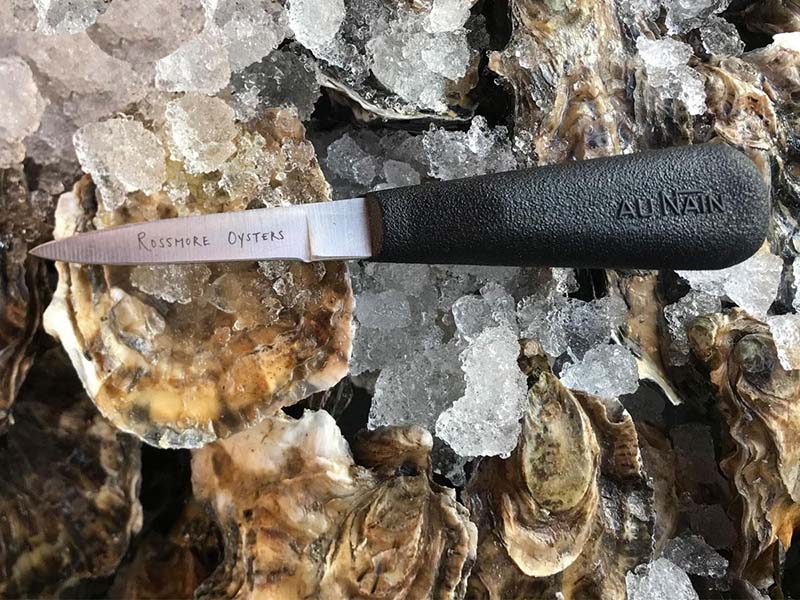
To shuck oysters, you should buy a knife with a stainless steel blade and thick grip. You can pick an oyster opener if you want to shuck them faster. Thanks to an oyster shucking tool, you can have the best experience with this seafood.
Can I Use a Butter Knife To Shuck Oysters?
You should not use a butter knife to shuck oysters. Although it is convenient because this knife type is metal, its handle is not suitable. This means a butter knife can slip and make you injured when you are prying on the shell.
Final Thought
After reading our post, we hope how to shuck oysters is not a difficult question for you. You can be a professional cook with excellent skills when preparing dishes, especially seafood such as oyster dishes. Let’s prepare the best dishes with material from the ocean for your beloved ones immediately.
